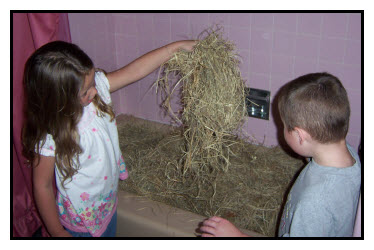What are the Different Types of Experimental Variables?
Variables are anything in an experiment that can change on its own or can be changed. Types of experimental variables are:
independent variables,
dependent variables,
controlled variables.
Independent Variable (IV)
An independent variable is a variable that is purposely changed.
The purpose of an experiment is to determine if or how changes in an independent variable affect a dependent variable.
Example: The photo shows children observing hay in a bathtub. They used the hay to perform an experiment.
The purpose of their experiment was to determine how changes in humidity affect the shelf life of onions.
Facts:
Shelf life is the length of time that perishable items, such as onions, can be stored before considered unsuitable for human consumption.
Humidity is the amount of moisture in the air. Storing perishable items in hay helps to keep them dry and increase their shelf life.
Experimental Investigation
The children stored onions in two different places:
1. Uncovered inside the bathroom, which has a relatively high humidity.
2. Under the hay, which reduces the humidity around the onions.
Dependent Variable (DV)
The purpose of an experiment is to determine if or how a dependent variable changes in response to specific changes in an independent variable.
The purpose of the onion experiment was to determine if the shelf life (DV) of onions changed in response to changes in humidity (IV)
Controlled Variable (CV)
There are always other variables (things that can change), such as the temperature of the storage area, lighting, type of onions, etc… When experimenting, try to keep everything the same for the different things that are being tested. In the previous example, by placing all the onions in the same room, they are basically being tested under the same conditions, except for changes in humidity. Since the onions under the hay are in the dark, the second set of onions should be placed in the dark–maybe in a drawer or closet.
Obviously all the possible variables cannot be controlled, but you should do the best you can to consider them and keep them from being different.
Use the Search on this website for more examples of variables.
How Plants Grow In Response to Light parallels the information on this page, but with a different example which enriches the information.
